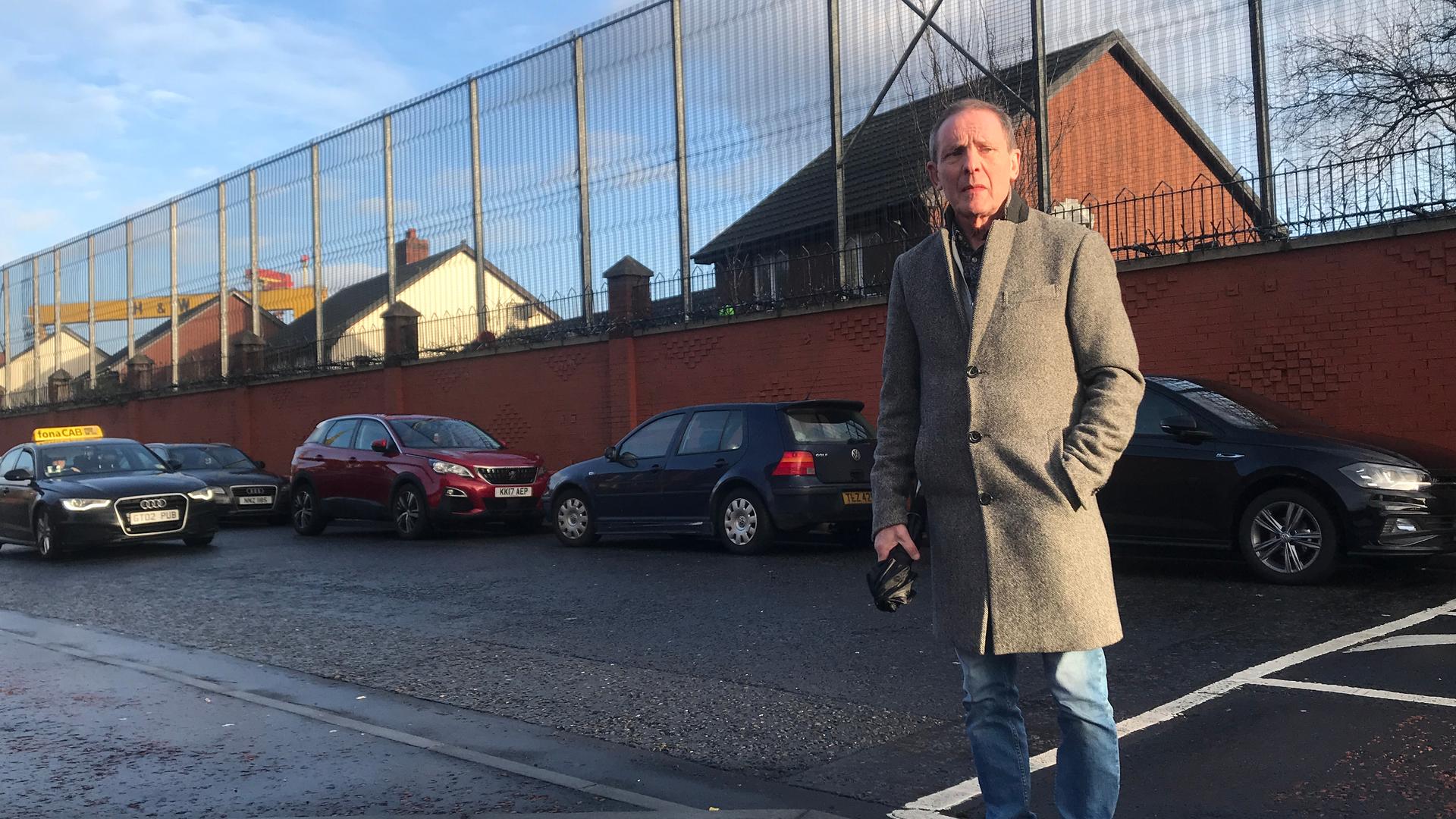Frank Brennan vividly recalls the shootings and bombings in Belfast, Northern Ireland, when he was a young man in the early ’70s as well as attacks on his own life.
Brennan, a member of the Irish republican movement, grew up in Short Strand, a staunchly Catholic, working-class neighborhood in predominantly Protestant east Belfast.
Since the late 1960s, a bloody, 30-year guerrilla war was waged throughout Northern Ireland, leaving over 3,600 dead. Commonly referred to as “troubles,” this period is defined by the conflict between Catholic republicans and nationalists, and Protestant loyalists and unionists. Catholics aimed to have a united Ireland, while Protestants fought to keep their British allegiance. This still continues today.
Related: Journalist’s death stirs difficult memories of Bloody Sunday
In the ’70s, the British government began to build separation barriers known as “peace walls” around Northern Ireland to separate Catholic and Protestant areas in an attempt to control sectarian violence.
The walls were meant to be temporary, but they helped to calm tensions and decrease attacks between the two communities living in close proximity and became permanent. Today, many residents who live along these walls still want them to remain.
“There were so many people killed just walking around this area. There wasn’t a night when something didn’t happen.”
“There were so many people killed just walking around this area. There wasn’t a night when something didn’t happen,” Brennan, 70, who spent time in prison for his involvement with the Irish republican movement, said while walking past Gaelic street signs and white-, green- and orange-colored Irish national flags.
Related: A New Protestant beginning for the Irish language in Belfast
Residents in Short Strand can peer over a 20-foot wall to the Protestant side where the red, white and blue colors of the British flag take prominence — even on the street curbs — and English-language signs dot the streets. Everyone in Belfast marks their Irish or British identity.
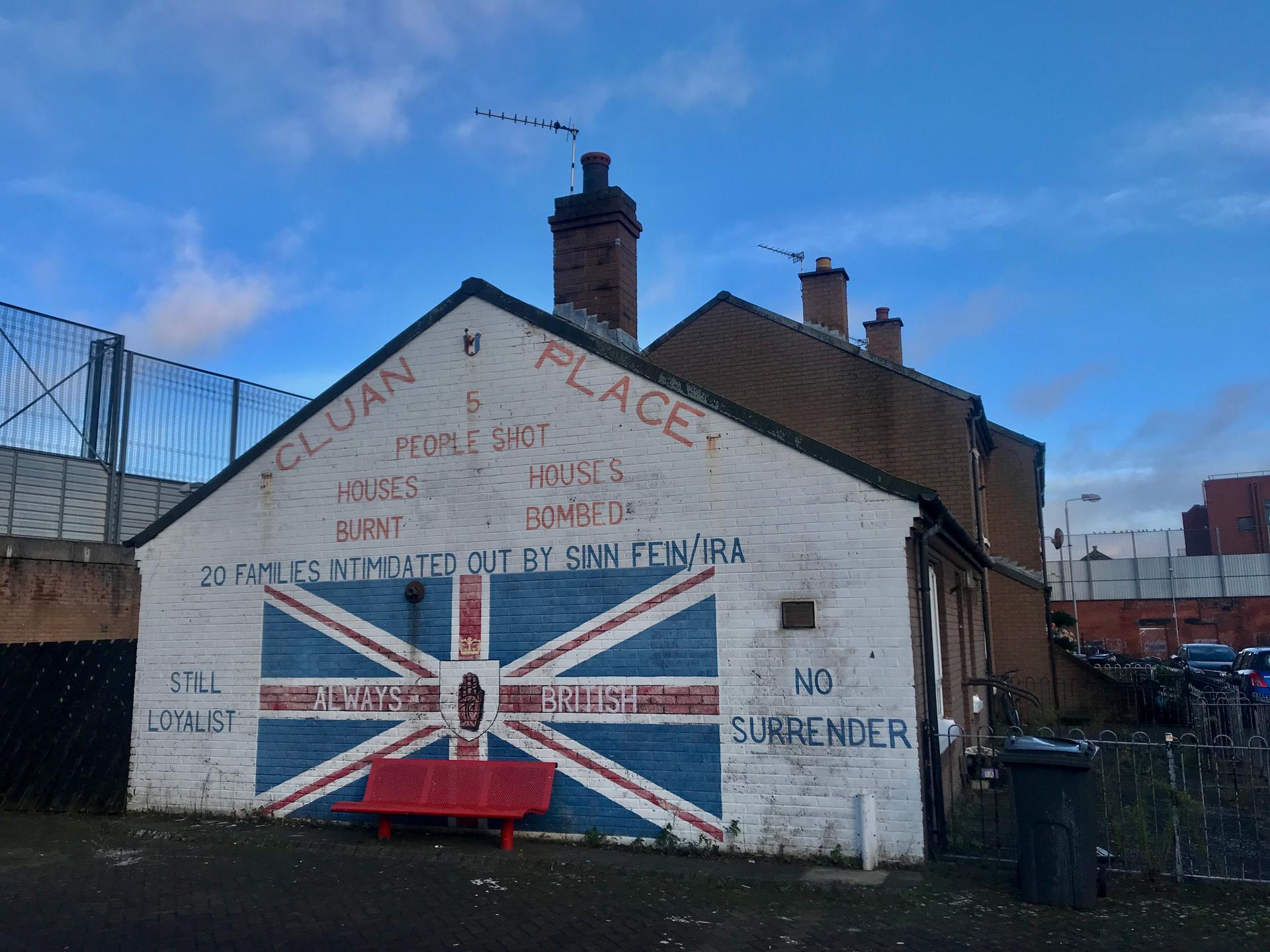
In 1998, a peace deal known as the Good Friday Agreement was signed between the British and Irish governments and most political parties in Northern Ireland, but sectarian violence continued for many years. More than half the peace lines that exist today were built after the peace agreement. Many are high, harsh structures, while others are a mix of gates, mesh fencing and solid walls.
In 2013, Northern Ireland’s government set up an initiative to remove all of them by 2023, but approximately 116 barriers remain “as visible symbols of community segregation and division,” reported the International Fund for Ireland, an organization that encourages contact and dialogue between nationalists and unionists.
Until this past weekend, however, the government was defunct for over three years after a row between the two major power-sharing parties: the majority Protestant and socially conservative Democratic Unionist Party, and majority Catholic Sinn Féin — once the Irish Republican Army’s political wing.
Related: What the UK’s new power deal means in the DUP’s Belfast heartland
These two parties continually butt heads over how they view the legacy of the “troubles” and the way Northern Ireland should run. They are now promising to get back to work, but neither party is entirely satisfied after negotiations.
“I live on a peace line, and I feel safer with those walls up,” Brennan said, echoing the stance of many others in Short Strand. In 2002, a huge spate of sectarian violence rose after the peace agreement. “Since 2002, we’ve been inundated with bricks, stones, bottles, pipe bombs, shootings, and we just feel safe behind it.”
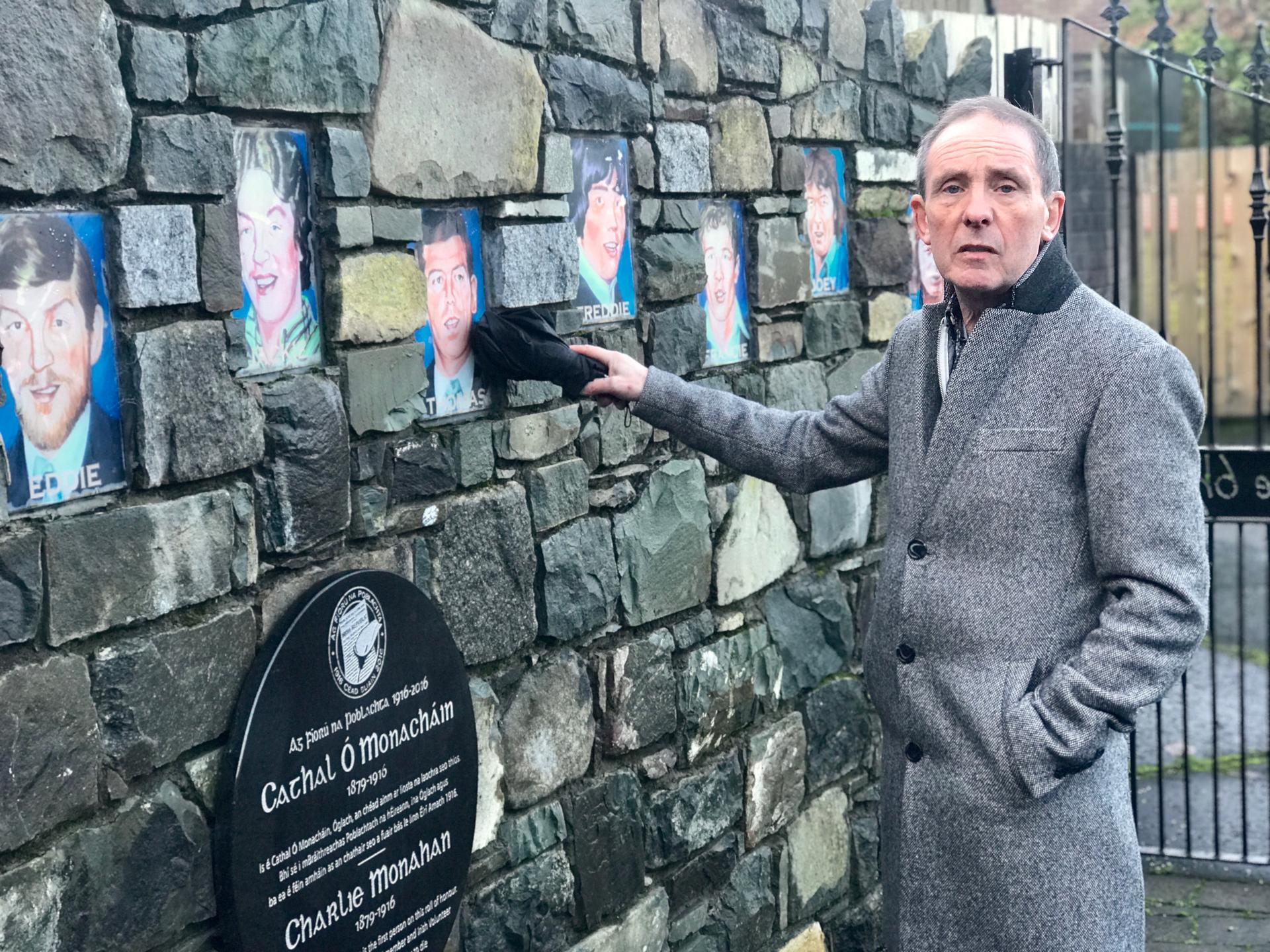
‘Everybody wants to live in peace, but I can’t see it’
Hayley Todd, 32, a care assistant, was visiting her mother in the house where she grew up in Short Strand.
“I don’t think it’s a good idea [to remove the walls], because you never know the minute something is going to be thrown over. My mum lives here and you just never know.”
“I don’t think it’s a good idea [to remove the walls], because you never know the minute something is going to be thrown over. My mum lives here and you just never know,” Todd said, adding that growing up in the area was difficult with so much sectarian violence.
Directly on the other side of the colossal wall that looms over Brennan’s house is a staunch loyalist Protestant area. People there are not keen on the walls coming down, either.
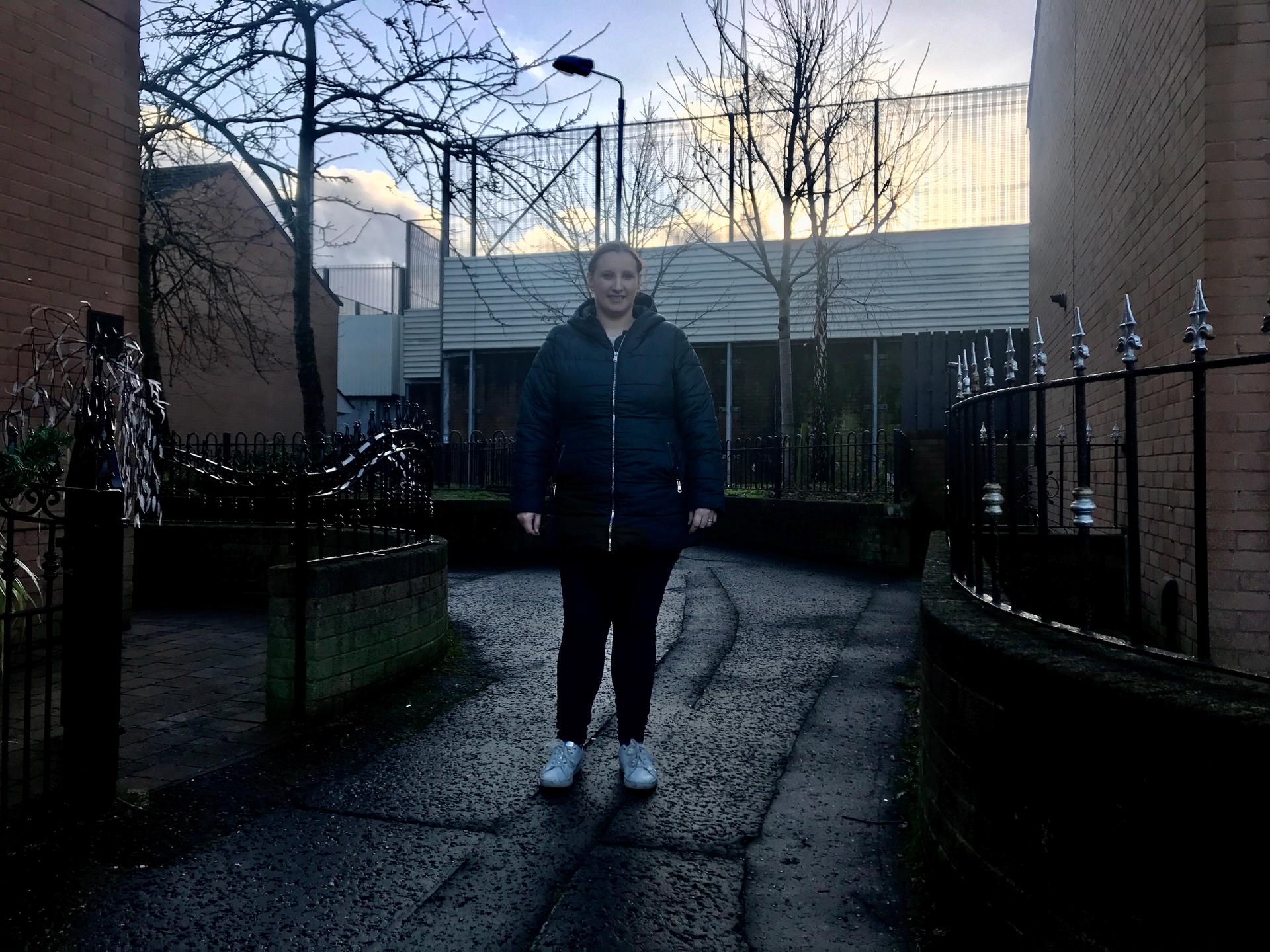
“When we first moved in here [seven years ago], it was mental with things coming over [the wall] and kids not being able to play on the street,” said Rosanne Thompson, 38, a professional caregiver who has a peace wall running across the back garden of her council house.
Thompson said not long after moving to the area, she was punched in the face and her friend’s arm was broken on one occasion by people from the other side.
“There is definitely a lot of tension between the communities,” she said, adding that the new generation is still “picking up on things” and fights organized through social media between young Catholics and Protestants are frequent.
“Everybody wants to live in peace, but I can’t see it. They’re talking about bringing these walls down, but that’s definitely not going to happen.”
“Everybody wants to live in peace, but I can’t see it. They’re talking about bringing these walls down, but that’s definitely not going to happen,” she said.
Just a few streets up from Thompson lies the “Protestant enclave” — as many Belfast residents describe it — of Cluan Place, one of the most notorious loyalist areas in the city. The street is decorated with British flags, and paramilitary murals adorn the sides of houses.
Andrew Forsyth, a 31-year-old chef, has spent his whole life in Protestant, working-class areas of east Belfast and has lived in Cluan Place for eight years. He, too, has a peace wall running through his back garden, which separates his street from Short Strand.
“If we look at [peace walls] in a realistic world, we shouldn’t need them, but also in a realistic world, it gives me more sense of security.”
“If we look at [peace walls] in a realistic world, we shouldn’t need them, but also in a realistic world, it gives me more sense of security,” he said at his doorstep with a giant sign that reads, “Welcome to loyalist Cluan Place. Unbowed, unbroken,” on the peace wall directly beside his home.
“I think one day the walls will come down, but the way the current political climate is, it’s far too soon. Maybe in 10 or 15 years, yes, but before they come down you need to have a government up and running who agree with each other,” Forsyth said.
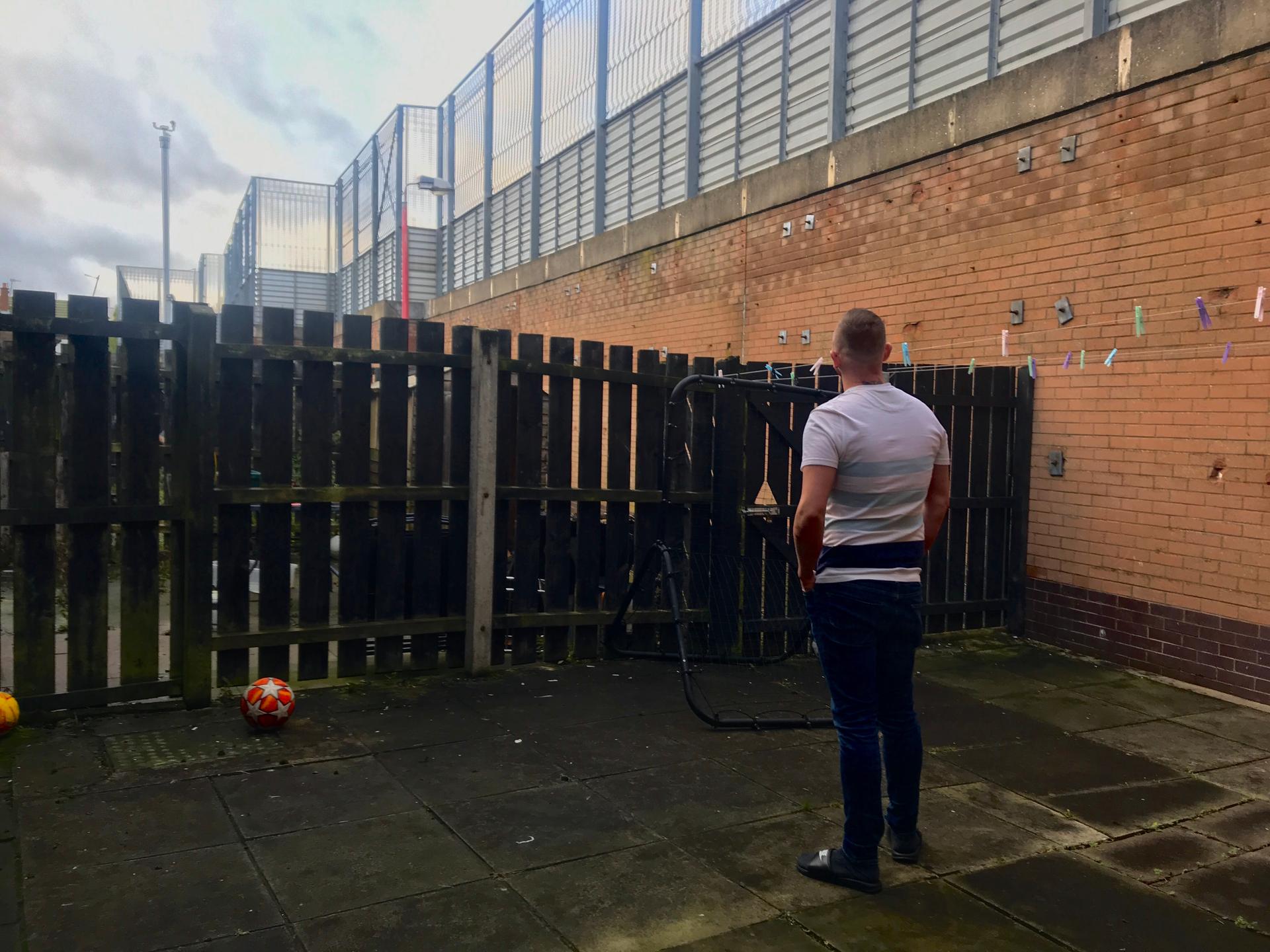
Breaking down mental barriers
Organizations have been working fiercely in Northern Ireland to bring the two communities together.
Duncairn Community Partnership (DCP), a cross-community organization committed to regenerating areas where segregation barriers exist in the predominantly Catholic, lower north Belfast area, receives funds to try and remove walls and build trust between the two communities.
“A big part of what we do and how we bring change is about bringing people from either side of our community together, getting them to know one another and breaking down those mental barriers, because they’re the hardest barriers to break down.”
“A big part of what we do and how we bring change is about bringing people from either side of our community together, getting them to know one another and breaking down those mental barriers because they’re the hardest barriers to break down,” said Ciarán Shannon, DCP Manager.
Shannon said that although many residents want the walls to come down, there are some groups who still oppose it for their own interests.
“There are still people who are opposed to moving forward in the peace and reconciliation process. On the republican side, you have dissident organizations who are criminal gangs, but they’re using this political cover. The more stable the community is, the more difficult it is for them to operate,” he said, adding that these groups also exist in loyalist communities.
Shannon and his colleagues also criticized the slow nature of the government who placed the 2023 peace walls removal goal in 2013, saying “no thought or strategy” had gone into it.
“The delayed progress has been because of the [government] departments and the system rather than residents,” he said.
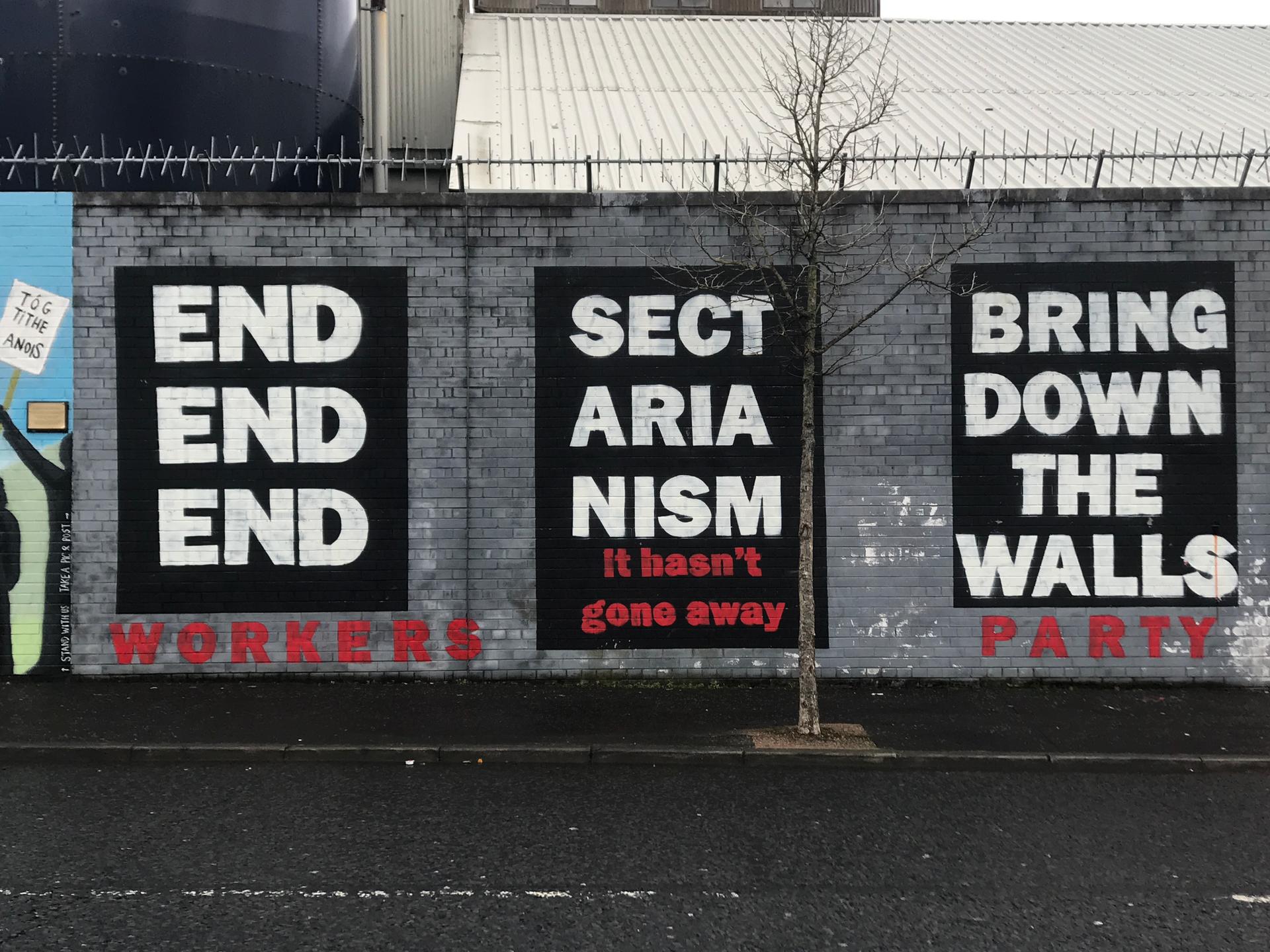
Brexit in the mix
Brexit is also another issue on the lips of Northern Ireland’s citizens as uncertainty over the border issue has stirred tensions.
In October, United Kingdom Prime Minister Boris Johnson promised no physical border will exist between the Republic of Ireland and Northern Ireland when Brexit comes into force, so as not to undermine the Good Friday Agreement. He proposes a new customs border in the Irish Sea between Britain and Northern Ireland. But some hard-line unionists see the deal as a betrayal.
Related: This tiny Northern Ireland town fears a Brexit hard border could stir more ‘Troubles’
Republicans refuse any notion of a physical border with the Republic of Ireland and the New Irish Republican Army dissidents — who have been on the rise since the Brexit announcement — say they will attack any infrastructure raised on the border. Protestant loyalists, meanwhile, fear the potential of a united Ireland.
Sinn Féin party leader Mary Lou McDonald told the press on Friday “there is no doubt there are serious challenges ahead: The impact of Brexit, austerity and other issues.”
DCP manager Shannon said there has been an upsurge in fear in certain areas where “there is more of a paramilitary influence,” but “whether Brexit is going to bring a sectarian element, we’re not sure.”
Related: For this city in Northern Ireland, Brexit is a big headache
In east Belfast, Forsyth, the chef, said there is concern within both communities.
“It’s a widespread concern. A lot of lies have been told on both the ‘leave’ and “remain” campaigns, and personally I think, once again, Northern Ireland and our communities are being played as a pawn in the game,” he said.
In Short Strand, Brennan thinks things could improve between the two communities as long as Brexit does not stoke Protestant loyalism.
“It’s so easy for things to turn. If they [Protestants] believe they’re going to be sold out, that they’re going to get a united Ireland … it’s all this kind of stuff that’s being filtered into people, and there are a lot of young people who will fall for that and may get involved with loyalism,” he said.
Paddy Harte, chairman of the International Fund for Ireland, said that their Peace Walls program works hard at the local level to break down mental barriers and stigma around walls.
“What we cannot do is fund the physical removal of barriers nor fund the much-needed economic and social regeneration of interface areas following removal. These are the responsibilities of the relevant government departments and agencies who own the barriers and/or who have responsibility for regeneration programs.
“Regrettably, ongoing political uncertainty means that progress is being hampered. Political will and leadership are essential alongside the necessary ring-fenced resources and funding to enable the physical change needed.”
“Regrettably, ongoing political uncertainty means that progress is being hampered. Political will and leadership are essential alongside the necessary ring-fenced resources and funding to enable the physical change needed,” Harte said.
But for Brennan, Forsyth, Thompson and many others living near peace walls in Belfast and around Northern Ireland, it seems they are going to be a source of security for the foreseeable future.
“The peace lines won’t come down in the time I have ahead of me,” 70-year-old Brennan said. “I hope eventually they will and people will learn to trust each other a wee bit more, but I don’t think they’re coming down soon.”
Our coverage reaches millions each week, but only a small fraction of listeners contribute to sustain our program. We still need 224 more people to donate $100 or $10/monthly to unlock our $67,000 match. Will you help us get there today?
